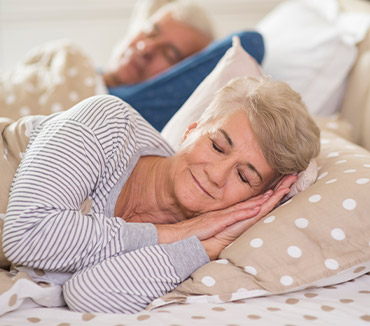Hidden Dangers of Sleep Apnea
What is Sleep Apnea?
Many of us look forward to a good night’s rest at the end of each day. However, some may be troubled by sleep disorders such as sleep apnea, which causes interrupted breathing patterns while asleep. According to the American Medical Association (AMA), 30 million people in the United States suffer from sleep apnea. People suffering from this condition are often at a higher risk of developing heart problems, diabetes, and other health problems.
What are Sleep Apnea Symptoms?

Common symptoms of sleep apnea include night sweats, snoring, excessive daytime fatigue, morning headaches, frequent urination during nighttime, dry mouth, sexual dysfunction, trouble focusing, irritability, and episodes of troubled breathing upon awakenings. However, individuals with this condition may not recognize that they are experiencing these symptoms. Children may also experience symptoms of sleep apnea, including poor school performance, mouth breathing, attention deficits, and nighttime incontinence.
What are the Newest Treatments for Sleep Apnea
- Adjusting lifestyle habits: In cases of mild obstructive sleep apnea, lifestyle changes including weight loss can help improve symptoms of sleep apnea. In addition, sleeping on your back, alcohol use, and certain sleeping medications can all exacerbate airway collapse during sleep, so avoiding these habits can be helpful.
- Continuous positive air pressure (CPAP): This popular device dispenses air pressure through the nasal passages to keep the airway open while sleeping.
- Oral appliances and mandibular advancement devices: There are many new designs of oral devices that help reposition the tongue and lower jaw more forward to unblock the airway in cases of mild to moderate obstructive sleep apnea.
- Surgery: In more severe cases of sleep apnea, surgical procedures may be recommended as treatment, such as upper and lower jaw surgery, nasal surgery, removal of tonsils, nerve stimulation, and upper airway tissue removal or shrinkage.
What are the Different Types of Sleep Apnea
The three types of sleep apnea include obstructive, central, and complex sleep apnea. Obstructive sleep apnea is characterized by recurring episodes of full or partial upper airway blockage during sleep. Central sleep apnea involves a disruption in the brain’s signaling pathway that controls regular breathing. Complex sleep apnea is a mixture of both obstructive sleep apnea and central sleep apnea.
What Raises the Risk of Obstructive Sleep Apnea?
Although obstructive sleep apnea can affect anyone, there are certain factors that raise the risk of developing this condition. For instance, family history, alcohol use, tobacco use, chronic difficulty breathing through the nose, narrowed airway, obesity, high blood pressure, and men have all been found to be risk factors of obstructive sleep apnea.
What Happens if Sleep Apnea is Left Untreated
Untreated sleep apnea can result in numerous health issues, such as high blood pressure, heart problems, stroke, diabetes, mood disturbances, and worsening of attention deficit disorders. Not to mention, untreated sleep apnea can increase the risk of job-related and motor vehicle accidents.
Conclusion
Sleep apnea is a severe health condition that impacts the lives of many. If you believe you may have sleep apnea, it is important to speak with your doctor or dentist who can inform you about the diagnostic steps and make any necessary referrals for your care.



